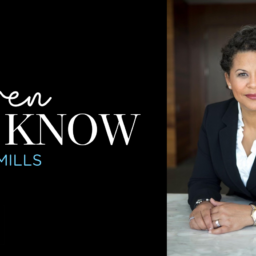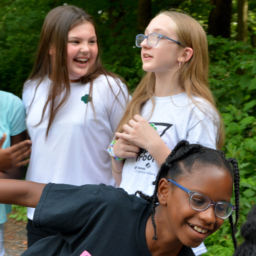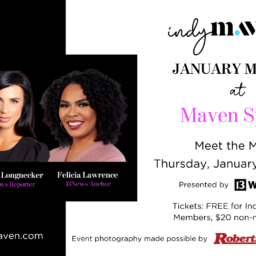
 Making an impact upon entering a room may be natural at certain times, but how to make it a habit? How do we fine-tune our efforts to do so? To answer these questions, I spoke with communications expert Lisa Mitchell. Lisa is an expert on intentional communications, which encompasses an entire suite of communication techniques, including mindset, intentionality, and communication goals. She is also a body language expert and Certified Forensic Interviewer (CFI).
Making an impact upon entering a room may be natural at certain times, but how to make it a habit? How do we fine-tune our efforts to do so? To answer these questions, I spoke with communications expert Lisa Mitchell. Lisa is an expert on intentional communications, which encompasses an entire suite of communication techniques, including mindset, intentionality, and communication goals. She is also a body language expert and Certified Forensic Interviewer (CFI).
How should we prepare prior to walking into a room – whether it is to network, deliver a presentation, or attend a meeting with peers?
People are assessing others and filtering them into “positive” or “negative” buckets more quickly than ever thanks to the pace of social media and technology. You have to be “on” before you’re on if you care about making a good first impression. The first step is to set your intention for that meeting and I suggest establishing a framework around three words that you would like to be the takeaway for people from their engagement with you. For instance, after you leave the room and the question is asked, “What did you think of Lisa?”, I would like their description of my interaction to be: knowledgeable, credible, and engaging. By being intentional about the type of experience you want to create for the person or people on the other side of your interaction, you essentially set your “internal GPS” and your body language, facial expressions, and vocal tonality all activate to help support getting you to your destination effectively.
What do you recommend we do before entering into an engaging situation, or as you refer to it, “How to win high-consequence conversations”?
In preparation, consider your three impact words and build a comprehensive communications framework around those terms. Visualize the positive outcome, and reverse-engineer what you need to do in order to get there. For instance, if appearing confident is important to you in a situation, deploying science-backed body language tactics such as open body posture, taking up space, and having a purposeful stride when crossing the room are all tools that help people draw the right conclusion about you, that you’re confident and ready to engage.
Sounds simple enough, but I know it’s not. Maybe it’s been a minute since someone interacted on a consistent basis with humans in person. How do we structure our pregame strategy?
Use all of your communication tools! Most people are already really good at conveying themselves well with good intention, it’s just a matter of being a little more strategic about it. Assess your internal GPS and explore what to do before you engage, what to do when you engage, and during your interactions, assess how you are sticking the landing.
What if someone isn’t feeling their best ahead of a big meeting, how do they level up?
Back to visualizing success for the engagement and use “I am” statements as you prepare. For instance, “I am knowledgeable, I am open to connection, I am engaging successfully with others.” — these will help reaffirm your intention.
What if you walk into a room and your stomach is in your throat? Is there something they would say out loud to diffuse your nerves?
This is an opportunity for vulnerability and connection by simply stating, “I always feel so awkward at these events!” or something similar that is authentic. This could build trust within an interaction through simply stating your truth. Feelings of uncertainty, regardless of preparation, are natural and by sharing how you feel, it gives other people permission to be vulnerable and honest, too. Speaking from the heart creates connection. Besides, people judge us less than we think they do.
I might get that etched on a plaque.
Sometimes the loneliest place to be is in a room full of people. How do you manage this type of circumstance?
A room of strangers can be intimidating and when someone invites me into their conversation, they instantly become my social lifesaver. Be that person to look for people and circle them into your conversation. Connect them with others—take the initiative to introduce people. This gives you a lot of social capital and you are helping others make meaningful connections. Showing up in this manner keeps your brain busy, so instead of feeling anxious, you are doing something positive and building up others. It feels good to help people feel welcomed and comfortable.
…which leads to good karma and all the feels of being of service to others.
Exactly.
Given the challenges of the past few years, have you noticed any changes in the way we communicate?
It is harder to connect now than we thought it might be. Not everyone has seamlessly transitioned from in-person to virtual and back to a hybrid environment. Companies and professionals are trying to bridge the gaps and regain the momentum of positive relationships and effective communication, regardless of format. I work via corporate training, keynotes, and executive coaching. I create actionable, easy-to-apply techniques that help people connect more quickly and with greater depth. It doesn’t take a long time to activate techniques and it takes very little effort to really positively increase connection.
Kara Kavensky is a strategic corporate communications, PR expert, and an author; her first memoir “Finding Joy” will be released later this year.
All of our content—including this article—is completely free. However, we’d love it if you would please consider supporting our journalism with an Indy Maven membership.















